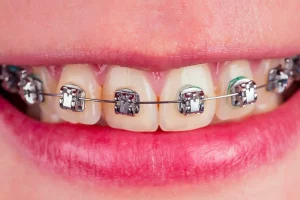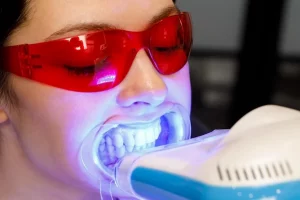Caviar tongue appears to be very scary to the naked eye, but it is usually harmless and does not spread from one person to another. So, you can share food, kiss, and share drinks even after another without worrying about spreading. Caviar tongue is a physiological change in the structure of connective tissue and muscle fibers that make up your veins. This change makes under the tongue veins appear purple or dark in color and pretty swollen.
Caviar tongue is not caused by the food called caviar you eat. We are talking about a physiological change associated with senile elastotic degeneration of the sublingual veins called the caviar tongue, which is also known as “sublingual varicosities” or “sublingual varices.” This blog post explores the causes, treatments, and symptoms of the physiological change in the tongue called caviar tongue.
What Is Caviar Tongue?
Caviar tongue is a medical term used to determine the physiological change that happens in the surface of the tongue where the sublingual venus becomes more prominent and twisted; this resembles the small black pearls of caviar. Hence, it is named caviar tongue. The veins appear enlarged and dark purplish.
Location of Caviar Tongue
Under your tongue, you might notice two blue or purplish veins running parallel along the underside. But if you have a caviar tongue, then these veins appear enlarged and very dark and purplish.
What Causes Caviar Tongue?
The main cause behind the caviar tongue is senile elastotic degeneration. It is a term that refers to the weakening and loss of elasticity in the connective tissue and muscle fibers of the veins under the tongue. Caviar tongue is caused by the natural process within the body and particularly by aging. So it is most common in people more than 60 and only very rare in people below 40—factors contributing to the development of the caviar tongue.
- Aging: As we age, the elastic tissues in our body naturally degrade. This makes the vein walls weaker and more prone to dilation, causing them to bulge and twist.
- Increased venous pressure: Any condition or habit that increases pressure in the venous system (such as straining, prolonged standing, or high blood pressure) may contribute to the development of varicosities under the tongue.
- Genetic predisposition: Some people may be more prone to developing varicose veins, including sublingual varices, due to inherited vein structure and strength.
- Other health conditions: Though rare, certain systemic conditions that affect blood flow or increase venous pressure may contribute, such as portal hypertension. However, in most cases, caviar tongue is simply an age-related change without underlying disease.
It is important to know that caviar tongue is not caused by any specific dietary habits or by eating caviar and is also not caused by infections or trauma. It is a noncontagious condition that develops slowly over time without any noticeable symptoms.
Symptoms of Caviar Tongue
Caviar tongue does not cause any symptoms that lead to discomfort, pain, or functional problems. So, most people notice caviar tongue incidentally when they are alone or during a routine dental checkup.
Occasionally, some people might experience,
- A mild sensation of fullness or awareness under the tongue
- Slight tenderness if the area is pressed or traumatized
- Cosmetic concern due to the visual appearance
Caviar Tongue Treatment
In most cases, the caviar tongue does not require any treatment as it is a harmless physiological change that happens naturally. Only treatment is recommended when an individual is concerned with significant cosmetic concerns or any complications arise due to caviar tongue.
Here’s what you should know about management options,
- Observation: For the vast majority of people, regular monitoring is all that’s required. Your dentist or healthcare provider may note the presence of sublingual varicosities during check-ups but will usually reassure you that no intervention is needed.
- Reassurance: Education and reassurance are key. Understanding that caviar tongue is not dangerous or contagious can help alleviate any anxiety you may have about its appearance.
- Addressing underlying factors: If you have underlying conditions that increase venous pressure (such as uncontrolled hypertension), managing these conditions can help prevent further enlargement of the veins.
- Surgical or laser treatment (rare): In rare cases where the veins become significantly enlarged, cause discomfort, or if there is repeated trauma or bleeding, a specialist may recommend minor surgical removal or laser ablation. However, this is seldom required.
Good oral hygiene, regular dental check-ups, and maintaining general health can help keep your mouth and veins healthy. Still, they will not reverse the natural, age-related changes that lead to caviar tongue.
When Should You See a Doctor or Dentist?
Even though caviar tongue is harmless, checking with the dentist is recommended if you are experiencing complications like the one below because a dentist or oral health specialist can confirm the diagnosis and ensure that no other conditions are present.
- Sudden swelling or enlargement of the veins
- Persistent pain or discomfort under the tongue
- Unexplained bleeding or trauma in the area
- Suspicious lumps or lesions elsewhere in the mouth
Takeaway
Caviar tongue might look unusual or even alarming when you look at it, but it is an unharmful condition that happens due to a physiological change in the body. Aging is the only factor that causes caviar tongue in most cases. No need to worry about caviar tongue as it doesn’t spread between people, doesn’t turn into something dangerous and usually doesn’t require any treatment.
If you’re ever unsure about a change in your mouth or have concerns, don’t hesitate to consult your dentist or healthcare provider. Contact Oris Dental Center in Dubai to maintain good oral hygiene and health.





